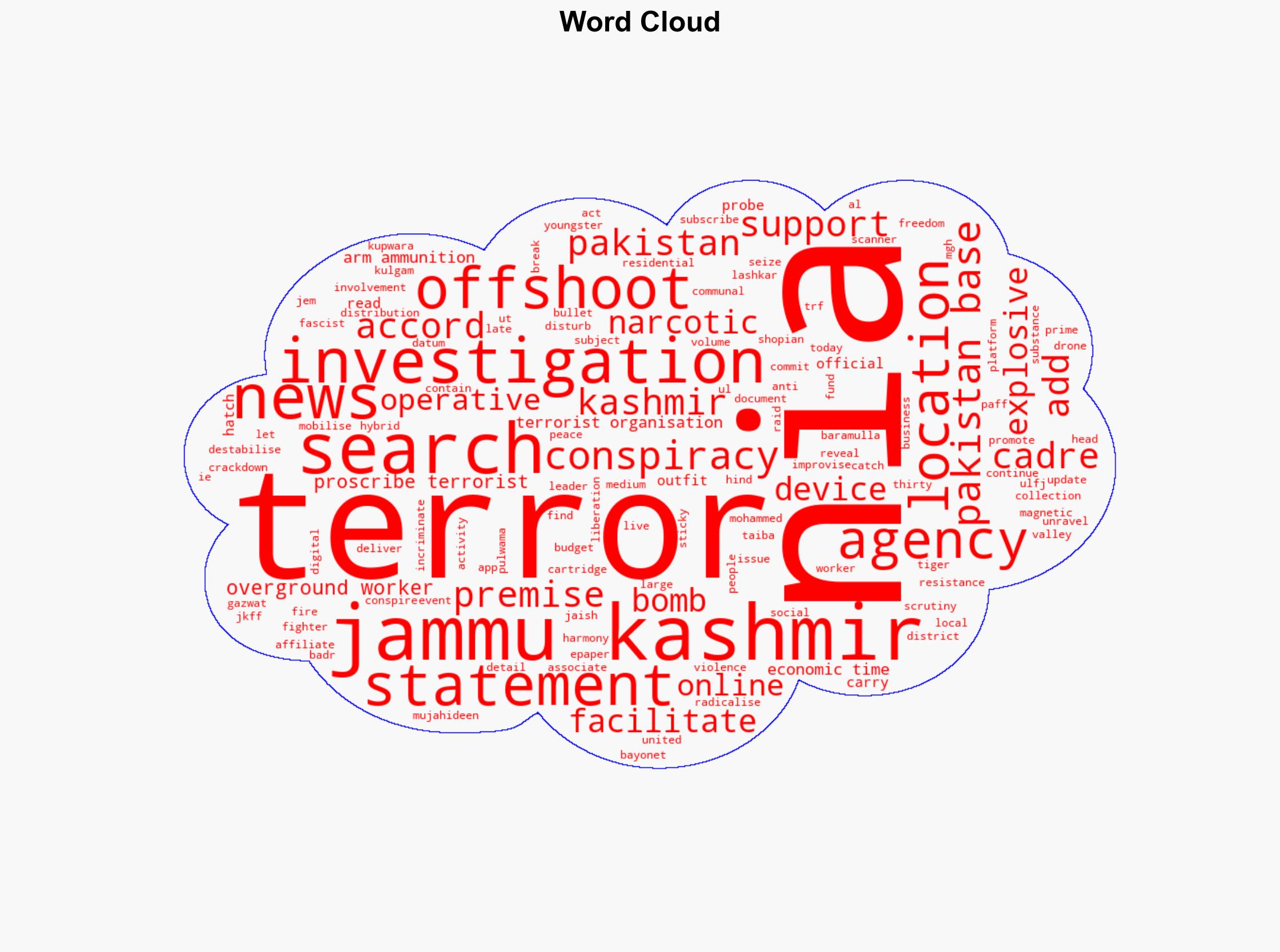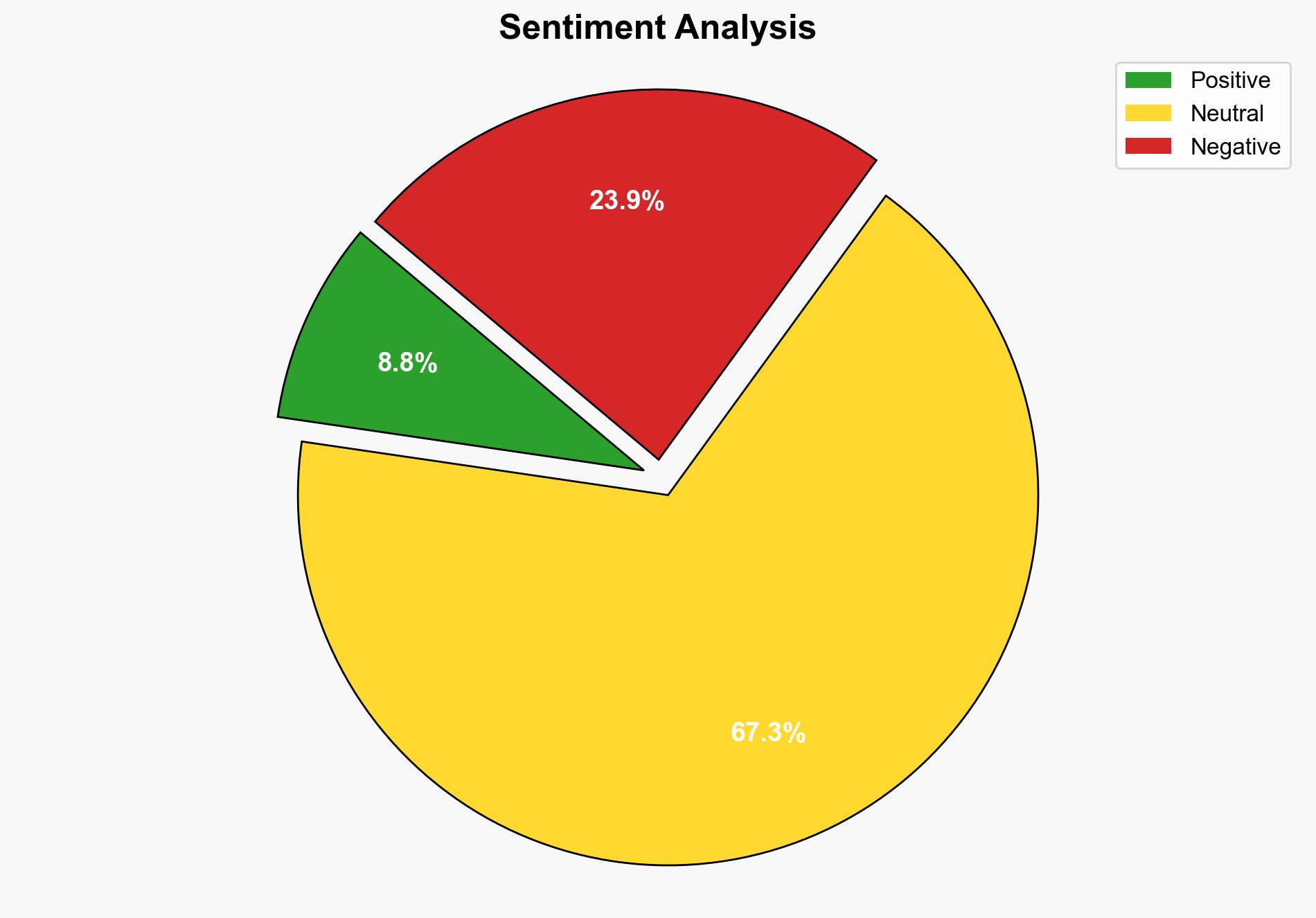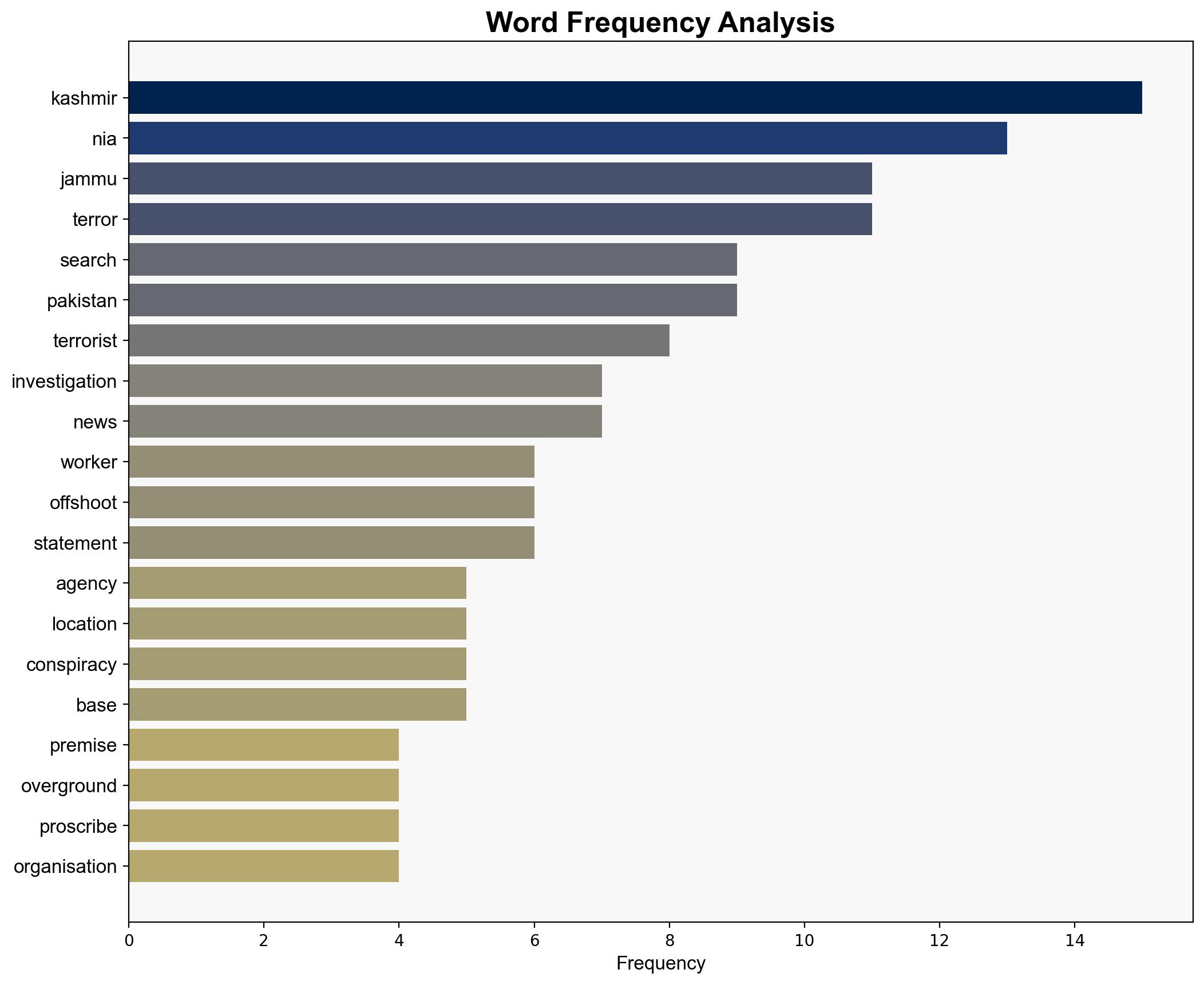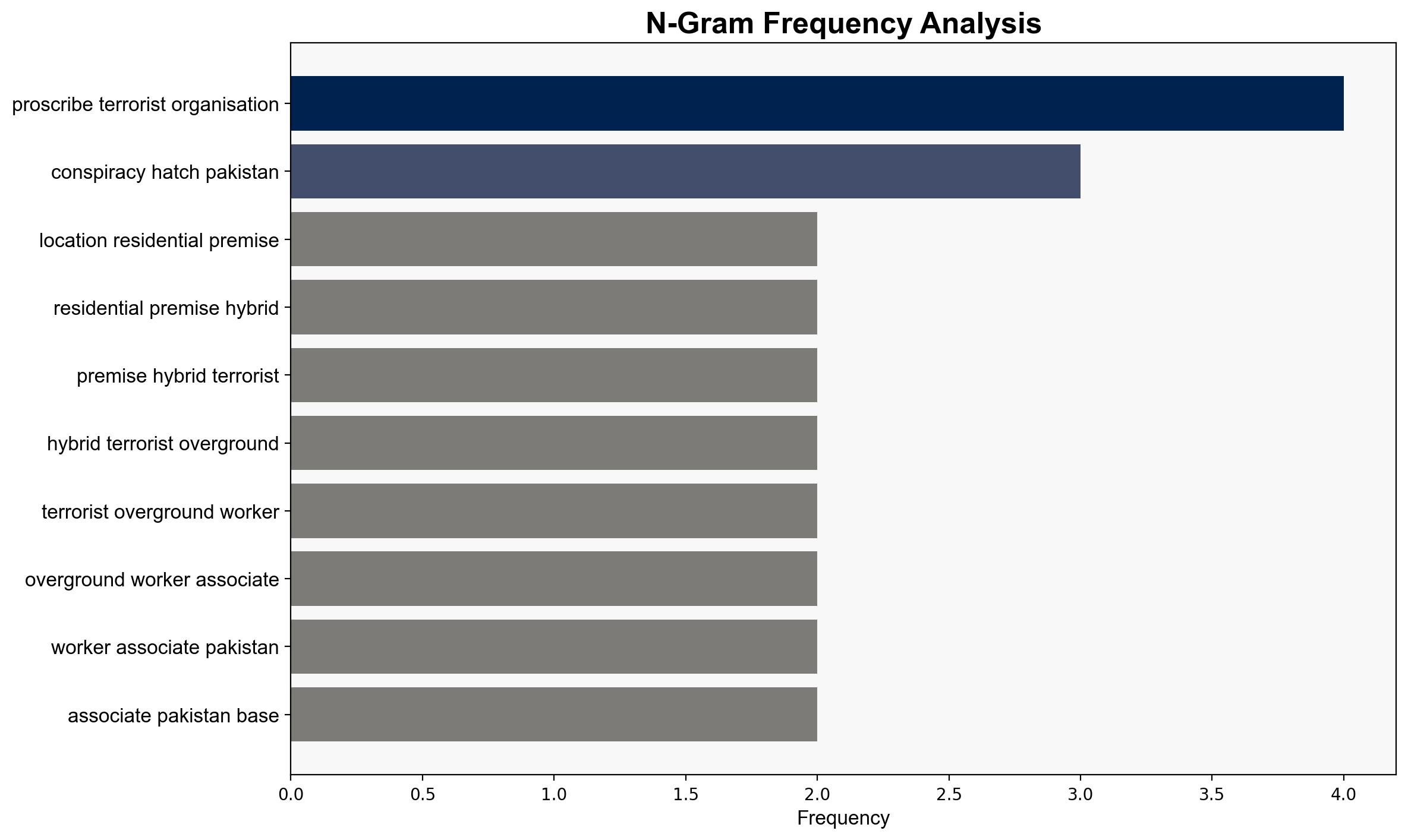NIA raids 32 locations in JK to probe conspiracy by Pak-based terror outfits – The Times of India
Published on: 2025-06-05
Intelligence Report: NIA raids 32 locations in JK to probe conspiracy by Pak-based terror outfits – The Times of India
1. BLUF (Bottom Line Up Front)
The National Investigation Agency (NIA) conducted raids at 32 locations across Jammu and Kashmir, targeting a conspiracy by Pakistan-based terror organizations. The investigation focuses on dismantling networks involving hybrid terrorists and overground workers linked to groups such as The Resistance Front (TRF) and Lashkar-e-Taiba (LeT). The operation aims to disrupt plans to destabilize the region through acts of terror, including the use of improvised explosive devices (IEDs) and narcotics. Immediate recommendations include enhancing cross-border intelligence sharing and increasing surveillance on digital platforms used for radicalization.
2. Detailed Analysis
The following structured analytic techniques have been applied to ensure methodological consistency:
Causal Layered Analysis (CLA)
Surface events: Recent raids highlight ongoing threats from Pakistan-based terror outfits.
Systemic structures: Persistent cross-border terrorism supported by state and non-state actors.
Worldviews: Ideological motivations rooted in regional instability and historical conflicts.
Myths: Perceptions of martyrdom and resistance fueling recruitment and radicalization.
Cross-Impact Simulation
The raids may lead to increased tensions between India and Pakistan, potentially affecting regional stability. Economic dependencies, such as trade and tourism, could suffer due to heightened security concerns.
Scenario Generation
Best Case: Successful disruption of terror networks leads to improved regional security.
Worst Case: Retaliatory attacks escalate, causing widespread instability.
Most Likely: Continued low-intensity conflicts with intermittent security operations.
3. Implications and Strategic Risks
The operations reveal vulnerabilities in regional security, particularly in counter-terrorism efforts. Emerging threats include the use of drones for arms delivery and the radicalization of youth via online platforms. Cross-domain risks involve potential cyber-attacks and economic disruptions.
4. Recommendations and Outlook
- Enhance intelligence collaboration with international partners to track and dismantle terror networks.
- Increase monitoring of digital communications to prevent radicalization and recruitment.
- Develop community engagement programs to counter extremist narratives and support deradicalization.
- Scenario-based projections suggest maintaining a robust security presence to deter potential retaliatory actions.
5. Key Individuals and Entities
The report does not specify individual names but focuses on entities such as The Resistance Front (TRF), Lashkar-e-Taiba (LeT), and other affiliated groups.
6. Thematic Tags
national security threats, cybersecurity, counter-terrorism, regional focus




